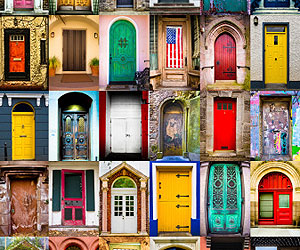Observation
In Diversifying Neighborhoods, How Do Attitudes Shift?
 Almost half a century after the Fair Housing Act was passed in 1968, many American cities – including New York; Washington, DC; Chicago; and Houston – are still vastly segregated by neighborhood. White people tend to group in certain areas, Black people in another, Asian people in another still.
Almost half a century after the Fair Housing Act was passed in 1968, many American cities – including New York; Washington, DC; Chicago; and Houston – are still vastly segregated by neighborhood. White people tend to group in certain areas, Black people in another, Asian people in another still.
And yet, changes to local demographics, housing policies, lending practices, and real estate markets over the last 50 years are increasing the sociocultural diversity of many city neighborhoods.
How will individuals living in these neighborhoods react to the changes? Will greater integration promote more contact and trust between groups?
A recent study published in Psychological Science examined just that, surveying more than 1,500 people in 224 neighborhoods throughout England.
About half of the participants were White British people — the majority group members in these neighborhoods – while the other half were ethnic minorities from neighborhoods of varying degrees of diversity.
The researchers asked several questions, trying to tease out how diversity influenced trust between groups, trust in neighbors, and overall attitudes toward out-group members.
Among individuals in the ethnic minority sample, greater neighborhood diversity was not linked with positive or negative attitudes toward the White British majority. That is, the level of diversity in a neighborhood didn’t seem to be related to ethnic minority individuals’ attitudes about the neighborhood or about the White majority.
And while the answers from the majority group were more mixed, the researchers found that greater diversity was associated with trust and positive attitudes overall, but in an indirect way: Greater diversity promoted contact and interaction between groups, and increased contact led to less perceived threats.
This study, which was among the largest and most comprehensive of its kind to date, adds to previous research by showing that these indirect effects of contact and perceived threat can play a significant role in overall levels of trust between groups.
“It is vital to capture how diversity is subjectively encountered, that is, through contact with those others who shape one’s diverse environments,” the researchers write.
The findings indicate that “diversity does not inevitably lead people to ‘hunker down’ but also enables them to open up and can provide them with opportunities for engaging with others of different ethnic backgrounds than their own,” Schmid and colleagues conclude.
![]()
Schmid, K., Ramiah, A., & Hewstone, M. (2014). Neighborhood ethnic diversity and trust: The role of intergroup contact and perceived threat. Psychological Science. DOI: 10.1177/0956797613508956





APS regularly opens certain online articles for discussion on our website. Effective February 2021, you must be a logged-in APS member to post comments. By posting a comment, you agree to our Community Guidelines and the display of your profile information, including your name and affiliation. Any opinions, findings, conclusions, or recommendations present in article comments are those of the writers and do not necessarily reflect the views of APS or the article’s author. For more information, please see our Community Guidelines.
Please login with your APS account to comment.